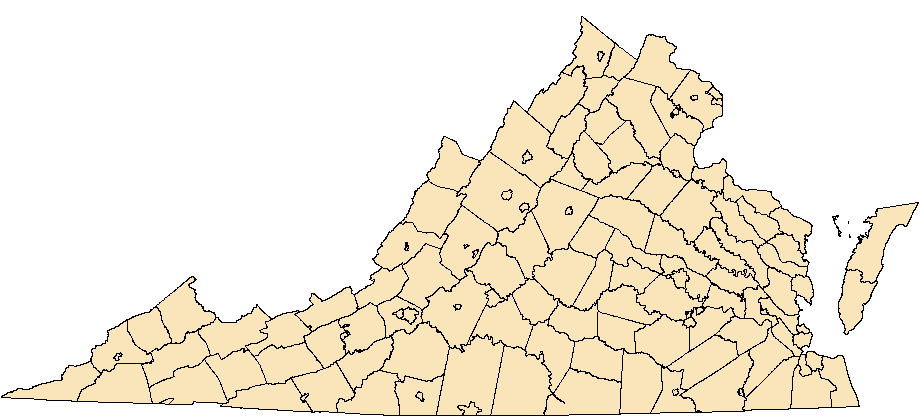Gomphus adelphus Selys, 1858
Mustached Clubtail
NatureServe Global Rank: G4
Virginia State Rank: S1
VA DGIF Tier: IV
Federal Legal Status: None
Virginia Legal Status: None
Description: The Mustached Clubtail is a small yellow and black species with a prominent widening of the abdominal tip (club). There are small yellow triangles on top of most abdominal segments except for the last few which are black with much reduced yellow lateral markings. The face is yellow with two prominent black lines, giving it its common name. Its size range is 44-46 mm (1.7 - 1.8 inches).
Similar species: Many clubtails are very similar and need to be examined in hand and identified using a combination of characters. The Mustached Clubtail is in a group of closely related small species with prominent clubs including the Spine-crowned (G. abbreviatus), Banner (G. apomyius), Piedmont (G. parvidens), and Green-faced (G. viridifrons) Clubtails. The Mustached Clubtail may be distinguished from the others by its two facial lines and limited amount of yellow on the abdominal tip. See discussions and illustrations in Paulson (2011) or Nikula et al. (2003).
North American Range: The Mustached Clubtail ranges in eastern North America from Nova Scotia west to Ontario, south to Tennessee and North Carolina. There are records from several western Virginia counties.
VA Observations by Locality: Augusta | Bath | Carroll | Grayson | Wythe






Flight season and broods: The Mustached Clubtail adult is active from 30 May through 28 June in Virginia.
Aquatic Habitat: The Mustached Clubtail lives in and around clean fast-flowing rivers.
Behavior and Ecology: The Mustached Clubtail adults perch on streamside vegetation or rocks in the streambed. It may fly late in the day.
Population trend and potential threats: The Mustached Clubtail is regarded as critically imperiled to vulnerable throughout its range, possibly extirpated in two states, and considered secure only in New Brunswick (NatureServe, 2011).
Management practices: Monitor and protect occupied habitats.
References: NatureServe. 2011. NatureServe Explorer: An online encyclopedia of life [web application]. Version 7.1. NatureServe, Arlington, Virginia. Available http://www.natureserve.org/explorer (Accessed: March 26, 2012).
Nikula, B., J. Loose, and M. Burne. 2003. A Field Guide to the Dragonflies and Damselflies of Massachusetts. Massachusetts Division of Fisheries and Wildlife, Natural Heritage & Endangered Species Program. Westborough, Massachusetts. 197 pp.
Paulson, Dennis. 2011. Dragonflies and Damselflies of the East. Princeton University Press. Princeton and Oxford. 538 pp.
Roble, Steven M. 2011. Dragonflies of Virginia- Flight dates. Unpub.
Virginia Department of Conservation and Recreation, Natural Heritage Program, 600 E. Main St., 24th Floor, Richmond, VA 23219
This atlas was compiled
by the VA Natural Heritage Program with funds provided by the VA Dept. of Game and Inland Fisheries through a state wildlife grant
from U.S. Fish and Wildlife Service
Questions/Comments? Check the contacts page |
Internet Privacy Policy Statement
Last Modified: Friday, 26 February 2021, 03:21:56 PM